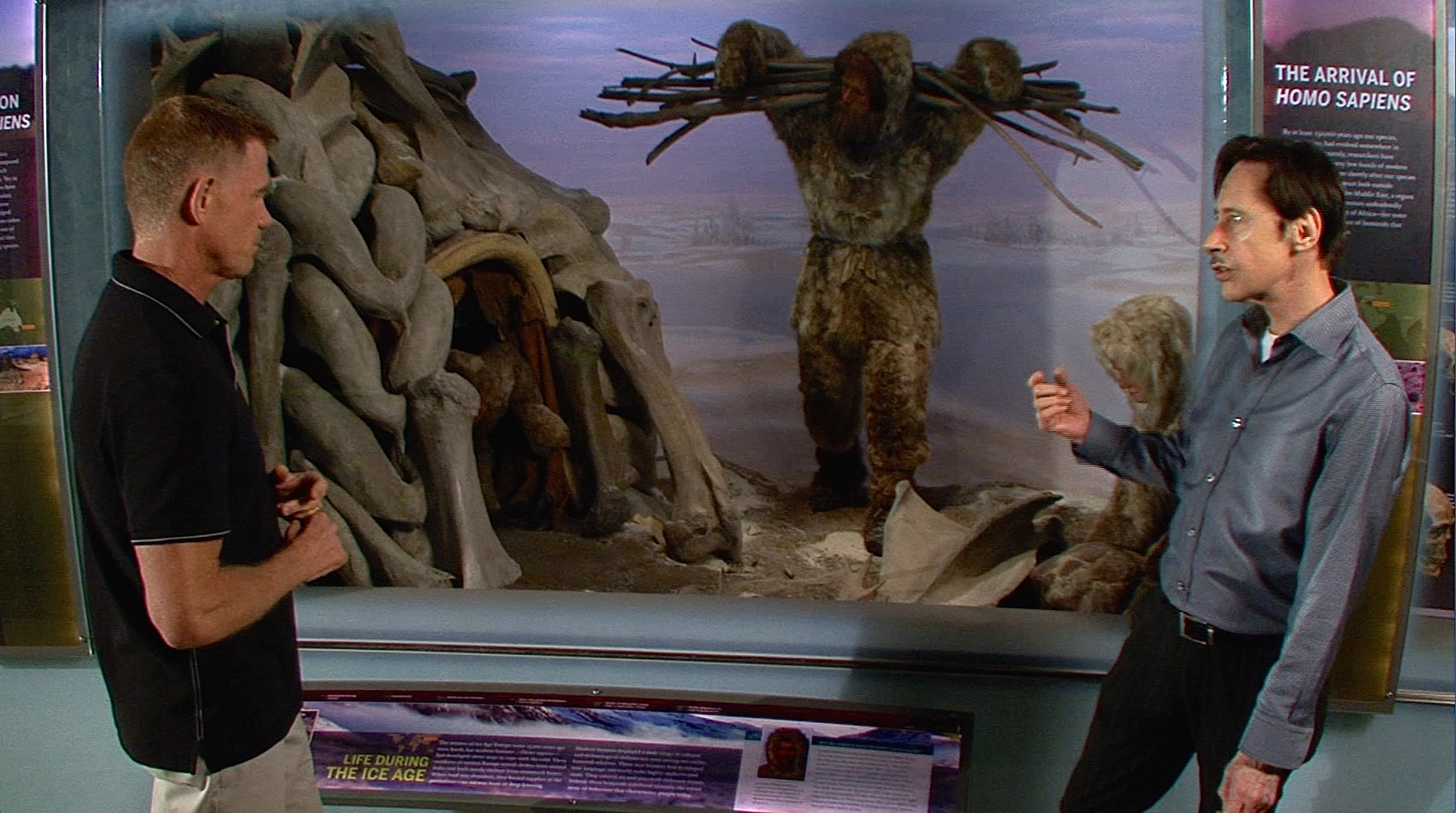Think Again: Early Modern Humans did not eat anything they could get their hands on
The Perfect Human Diet
There is a persistent belief (assumed to be true, even by prominent bloggers) repeated over and over again as if it's fact - but, it's not. In fact, this belief is sometimes used as a "logical" excuse for the author to include anything in their diet, and their diet recommendations, the author doesn't want to stop eating. This belief is that early modern humans, our species, were such opportunists, and so desperate for food, that they would eat just about anything they could get their hands on. Not so.
Interestingly enough, early Moderns had very specific food preferences. As long as they could get those preferred foods, that's what they ate. It was unnecessary for them to take advantage of what we now recognise as our species eventual survival strategy, our dietary "elasticity." It is what sets us apart from other primates.
That survival strategy (dietary elasticity) in the specific example I'm about to share, would be the assumed expanding variety (diversity) of animal proteins they consumed from the day they hit the beach... just because it was there in the environment.
“Sicilian cuisine is famous for the bounty of the Mediterranean: fish, clams, mussels, shrimp. But 20,000 years ago, around the time of the last ice age, the first modern humans who arrived in the region ate very little seafood...”
As some of you might know, just before the film was finished, and again while writing the companion book to the film last year, I went back to my first person scientific sources at the Max Planck Institute for Evolutionary Anthropology to see what more, if anything, they had learned about the authentic human diet.
Shannon McPherron Pic Courtesy Department of Human Evolution of the Max Planck Institute for Evolutionary Anthropology.
Professor Shannon McPherron (you met him in the Jonzac dig site sequence in the film) told me that the findings about our species diet in Jonzac, that early Modern Humans there ate primarily medium and large herbivores, were the very same findings Max Planck researchers and colleagues were discovering at dig sites all over the world.
Something I hadn't really expected to hear as I was initially just interested in new information from Jonzac.
He also said there was some new information about the early modern human diet from one of his colleagues, Marcello Mannino, that might interest me revealing previously unknown information about our species dietary behaviour.
Marcello Mannino Pic/Bio Courtesy Department of Human Evolution of the Max Planck Institute for Evolutionary Anthropology.
Marcello A. Mannino is a research scientist at the Department of Human Evolution where he collaborates in the management of the archaeological science laboratories. He is currently investigating human dietary change from the late Middle Palaeolithic, through the *Upper Palaeolithic and to the early Neolithic by means of stable isotope analyses on skeletal remains of Neanderthals and Modern Humans (*immediate time frame pre-agriculture which includes our species, early Modern humans).
Marcello started working at the Max Planck Institute after being awarded a Marie Curie Intra-European Research Fellowship for the project: Stable Isotope Ecology of Hunter-Gatherers in Italy in the Late Pleistocene and the Early Holocene.
Marcello has a keen interest in, among other things, studying the reconstruction of past environments, subsistence, diet and mobility.
In this project Marcello and his colleagues did an isotopic analysis of remains they found in the Mediterranean to determine what we were eating when we first moved into that area.
“The remains were found in a cave on the small island of Favignana, which thousands of years ago was part of Sicily. Sicily itself was connected to the mainland by a land bridge, allowing humans to cross over....”
http://journals.plos.org/plosone/article?id=10.1371/journal.pone.0049802
This is what Marcello and his colleagues discovered.
Marine resources were not important foods in the diet of Upper Palaeolithic and Mesolithic hunter-gatherers - as we might have arbitrarily expected to be true.
So, what did they want when they first moved to the beach? They wanted what they were used to eating and preferred.
“The source of the dietary protein consumed mainly originated from the meat of medium to large terrestrial herbivores”
As Marcello and his coauthors concluded in the journal PLoS One, "Local hunter-gatherers did not develop strongly marine-oriented adaptations, such as those of their counterparts living on the Atlantic shores of Europe, but maintained essentially terrestrial-based strategies, similar to those of Late and Post-Glacial groups of the central and western Mediterranean."
Again, why does this matter?
First, early Modern Humans preferred eating medium and large land animals whenever and wherever they could get them. This continues to be missed as an essential point about our species.
Second, while we were smart and inherently able to expand our animal food sources when it was required, the human species did not eat anything that was in arm's reach no matter what. That seems to be more of our species current dilemma. One we probably don't want to model if we want the health and life we deserve.
These new hard science revelations are a real eye opener, and another good reason to keep digging deeper. To always be open, and actively look for new findings that tell us what is was that made us, modern humans, so special. And, at least until plant agriculture took over, healthy.
What I like to say to myself when hard sciences reveal new details about our shared human story is it's time to "think again."
What do you think?
As always, you are invited to share your thoughts and questions below.
* My emphasis.
Article Source: Origin and Diet of the Prehistoric Hunter-Gatherers on the Mediterranean Island of Favignana (Islands, Sicily)
NY Times: "Mediterranean Settlers Had Little Taste for Fish"





